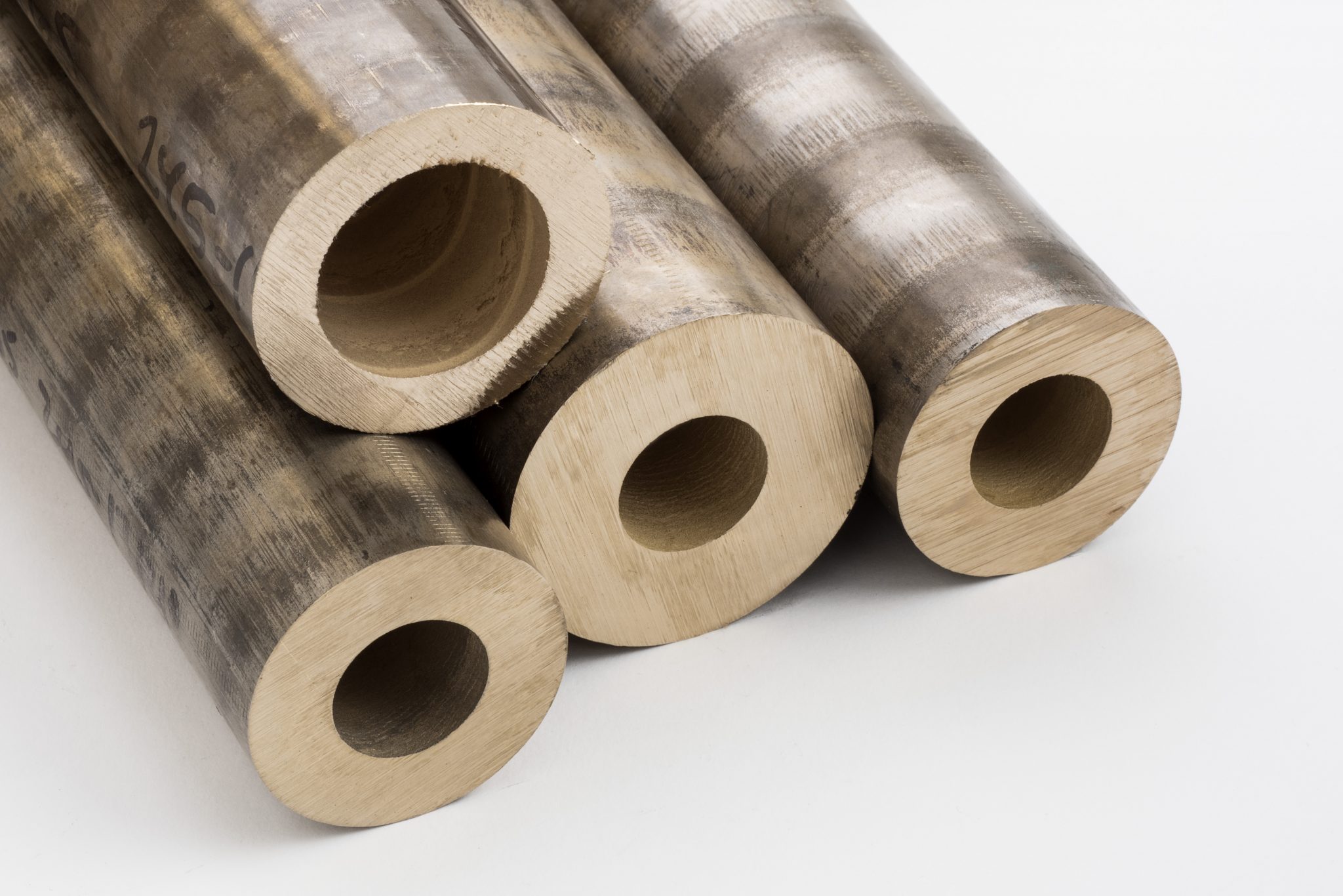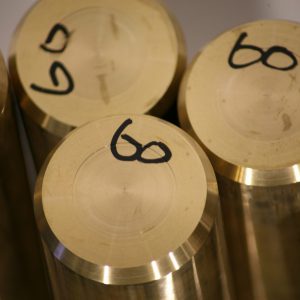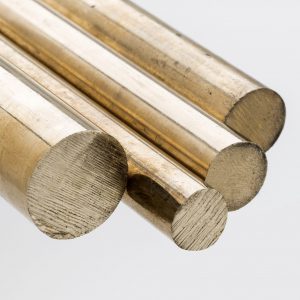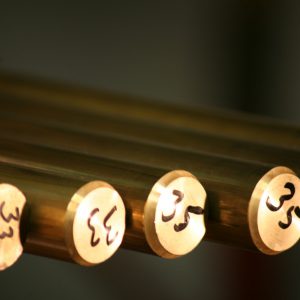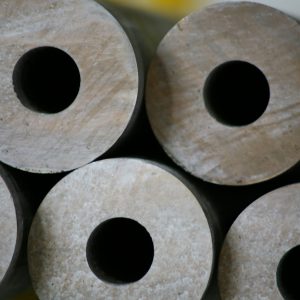Description
Federal Metals (USA) are the inventing company of a unique and patented method enabling bismuth to fully blend with the copper matrix. This means that you do not experience the brittleness of the material that is normally associated with bismuth, as a substitute for lead. There are several different lead-free alloys. Below you can see the mechanical values for C 898 35 that can replace RG7/SAE 660/Cu Sn7 Pb7 Zn3 in full.
Chemical composition (nom.)
– Cu 87.0%
– Bi 2.2%
– Sn 6.7%
– Zn 3.0%
Max impurities
– Ni 1.0%
– Al 0.05%
– Sb 0.35%
– Fe 0.2%
– P 0.10%
– Si 0.005%
– S 0.08%
– Others max 1.1%
Mechanical properties (nom.)
Yield strength (Rp N/mm²): 96-124 N/mm²
Tensile strength (Rm N/mm²): 206-241 N/mm²
Elongation in % A 5: 15-20%
Hardness/Brinell: 65 HB
Density ∼ 8.9
Mating material: Min. surface hardness 165 HB. Rec. surface roughness <1 Ra
Characteristics The material is not suitable for welding. The material is suitable for soldering and brazing. The material is also suitable for bonding.
General information about Bismuth (Bi)
- Bismuth = The name probably traces back to the German language, ”Weisse Masse” (White substance/Vismut)
• Bismuth is a silvercolored metal with a red to pink tinge…
• Unlike lead (Pb) it is hard and brittle
• Main producers is Bolivia, China, Korea, Mexico and Peru
• World production (2015) 8500 tons (ca. 2/3 goes to the U.S.) - Is not on the EU list of ”unwanted substances”
• Is classed as an ”friendly alloy” in the U.S.
- Is used in unprescribed stomach remedies. Is the additive giving the “mother-of.pearl-effect” in lip stick, eye shadow, nail polish etc.
• Is not on the so called OBS-list from The Swedish Chemical Inspection (Government)
As the toxicity of lead (Pb) has become more apparent in recent years, alloy uses for bismuth metal as a replacement for lead have become an increasing part of bismuth’s commercial importance.
